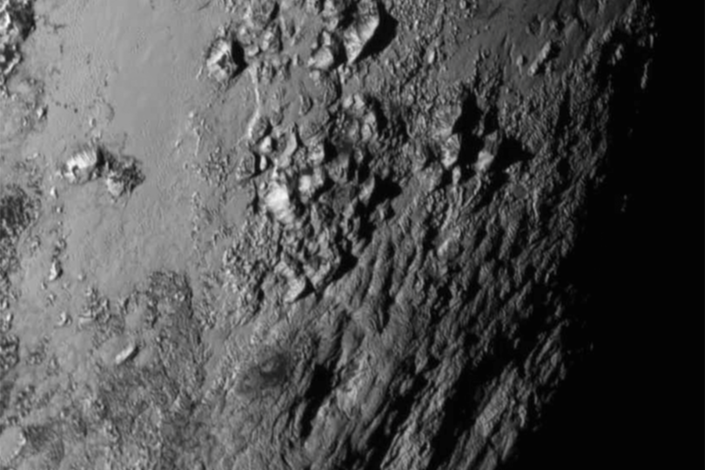New Horizons, the NASA spacecraft that on Tuesday flew within 8,000 miles of Pluto, has phoned home, and scientists are getting their first close-up views of the dwarf planet, nearly 10 years after the craft left Earth on a 3-billion-mile journey to the outer solar system.
“The encounter has been very emotional,” said Alan Howard, a University of Virginia planetary geologist who is at mission control – the Johns Hopkins University Applied Physics Laboratory in Laurel, Md. “I am amazed at the degree to which the public has tuned into this event, including an overflowing audience at the Applied Physics Lab.”
Howard and Anne Verbiscer, a U.Va. planetary astronomer, are among the first scientists at the Hopkins lab to begin interpreting data and images from New Horizons. Howard said the new images have exceeded expectations.
“Pluto is decorated with an amazing variety of landforms and frost features,” he said. “We will be working for years with high-resolution images and other data that will be downloaded. It will take the imagination and expertise of many team members to decipher the composition and evolution of Pluto and its satellites.”
The data received thus far of the close encounter is a small sample of what is to come as New Horizons streams in more images and data during the next 16 months. The spacecraft now is continuing on its mission, traveling into the Kuiper Belt, a vast icy debris field rimming the solar system.
“As for Pluto, what we know now that we didn’t know days ago is that it is an incredibly rich and diverse world which will keep us busy for years to come,” Verbiscer said. “The New Horizons spacecraft has performed flawlessly throughout the close encounter period, and the small amount of data it has sent back to Earth has not disappointed at all. We’re all in awe of what we’ve seen, as well as what can be accomplished when humanity pursues its fundamental desire to explore.”
Twenty-six years ago, Verbiscer was a graduate student working with the Voyager Imaging Team on the flyby of Neptune and its large moon Triton. At the time, some scientists believed that Pluto would look much like Triton, because both objects are believed to originate in the same part of the solar system and have similar size and composition.
“Today, I am thrilled to see that, although [Pluto and Triton] have some similarities, they are not twins,” Verbiscer said. “Pluto has a greater number of distinct provinces and even has more craters than Triton. We have yet to explain why, but no doubt, the data from New Horizons will surely tell us more.”
Media Contact
Article Information
July 15, 2015
/content/first-pluto-images-arrive-gleeful-uva-astronomers-are-observing-mission-control

